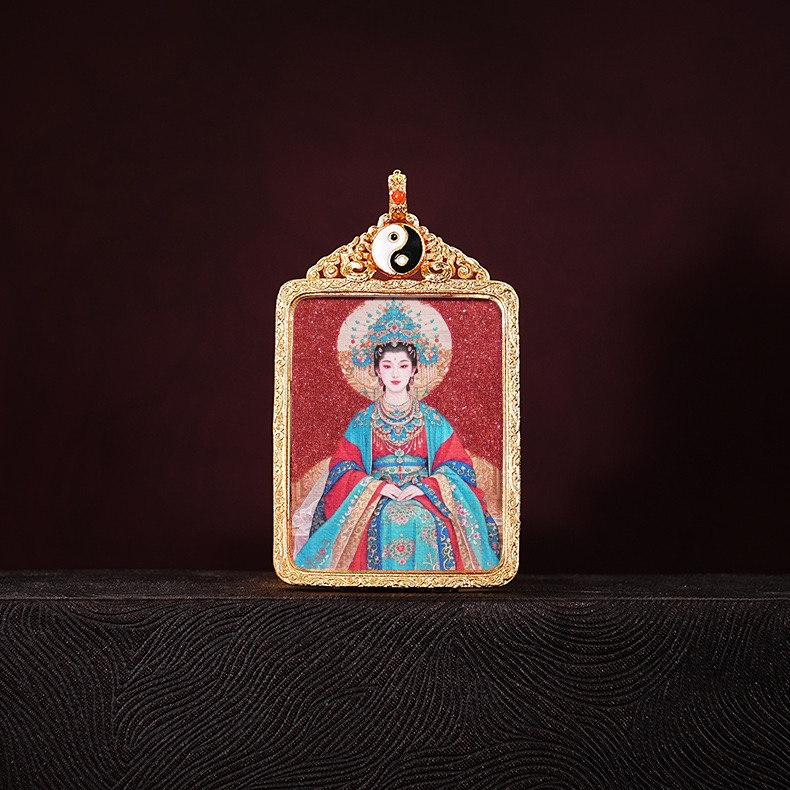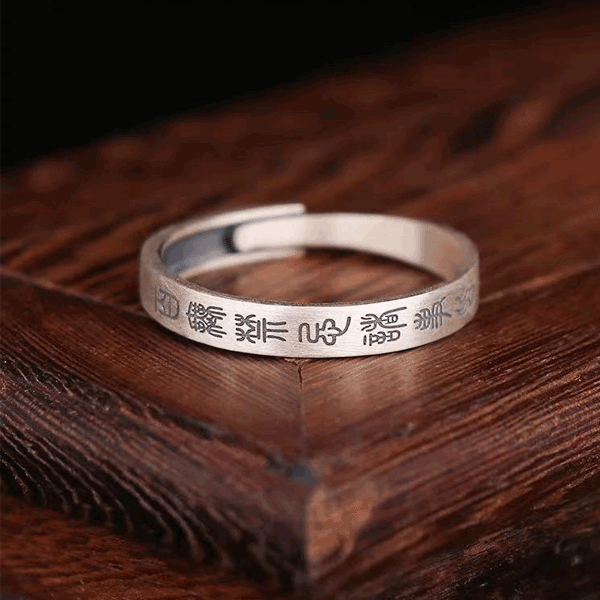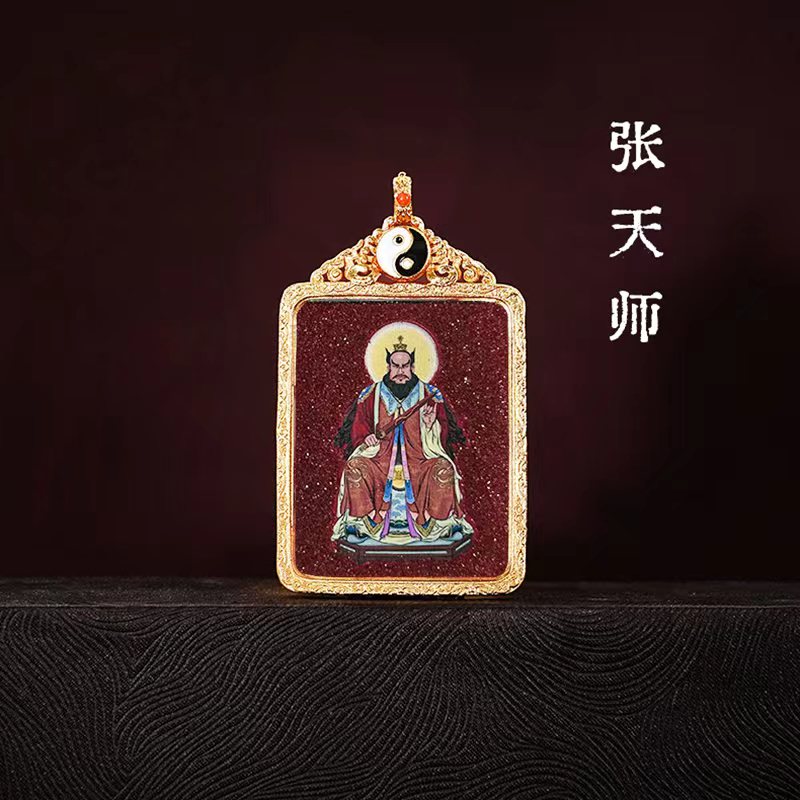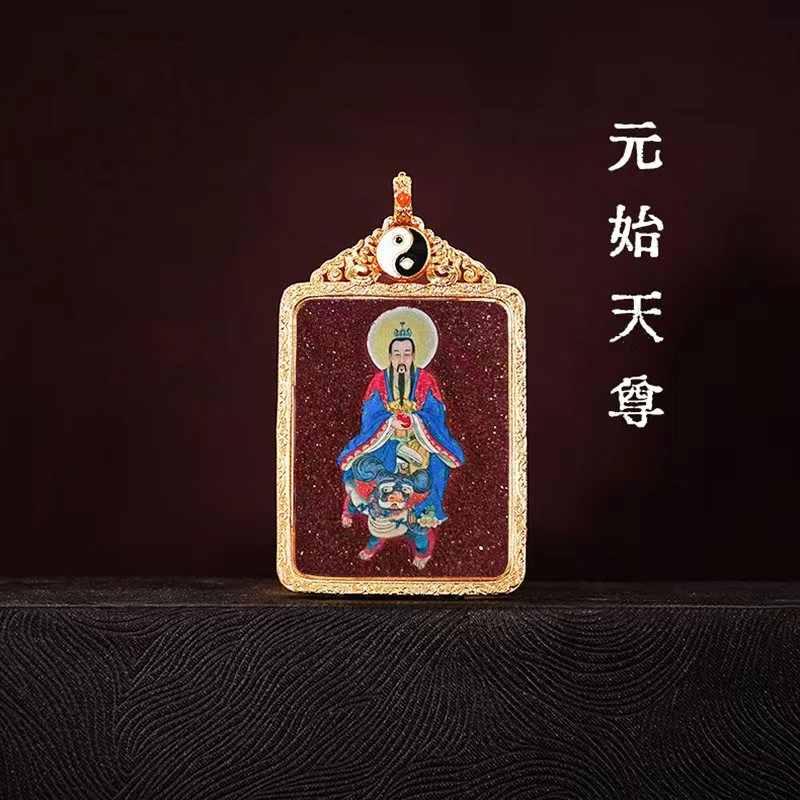Chinese Taoism: Pursuing the Ancient Wisdom and Practice of the "Tao"
Taoism, with the "Tao" as its highest faith, is a native Chinese religion. It reveres Huangdi as its founding ancestor, Laozi as the founder of Taoism, and Zhang Daoling as its founder. It boasts an institutionalized history spanning over 1,900 years. Taoism is not merely a religious belief but also a philosophy, lifestyle, and cosmology that has profoundly influenced every aspect of Chinese culture.
.jpg)
Zhang Daoling, the founder of the Zhengyi School of Taoism
I. Core Teachings and Basic Beliefs
The Taoist doctrinal system is vast and complex, but its core can be summarized in the following basic points:
1. Respecting the Tao and Valuing Virtue:
"Tao": The core of Taoist belief. It is the origin, law, and ultimate truth of all things in the universe. The Tao is formless and invisible, existing before heaven and earth, and giving birth to all things. Pursuing unity with the Tao is the ultimate goal of Taoism.
"Virtue": The manifestation of the Tao in concrete things. Cultivating personal virtue is an expression of following the Tao.
2. Harmony between Man and Nature:
This is one of the most important philosophical concepts of Taoism. Taoism believes that Heaven (the natural universe) and humans are an organic whole, mutually connected. Human behavior should conform to the laws of nature, achieving a state of harmonious coexistence with nature. Feng Shui, Traditional Chinese Medicine, and other practices stem from this concept.
3. Purity and Inaction:
"Purity" refers to a tranquil mind and abstaining from desires, free from distracting thoughts.
"Inaction" does not mean doing nothing, but rather refraining from impulsive actions or coercion, acting in accordance with nature and the inherent nature of things. In other words, "If you practice inaction, you will achieve everything."
4. Enjoying Life and Aversion to Death:
Unlike some other religions, Taoism places great importance on life, pursuing longevity and attaining immortality. It believes that life is extremely precious, and through cultivation, one can transcend the limitations of the physical body and achieve eternal life.
5. Retribution for Good and Evil:
Taoism inherits and develops the traditional Chinese concept of retribution, believing that gods in Heaven and Earth judge people's actions and reward or punish them accordingly. The concept of "responsibility" states that an individual's fortune and misfortune are not only determined by themselves but also influenced by the good and evil deeds of their ancestors, which in turn affect future generations.
II. Historical Origins and Development
Ideological Origins (Before the Eastern Han Dynasty): Taoist philosophy (Laozi's "Tao Te Ching" and Zhuangzi), primitive witchcraft, ghost worship, and the Daoist Taoism.
Initial Period (Late Eastern Han Dynasty): Zhang Daoling founded the "Five Pecks of Rice Sect" (Tianshi Dao) on Heming Mountain in Sichuan, marking the formal formation of Taoism as an organized religion. Concurrently, there was also Zhang Jiao's "Taiping Dao."
Differentiation and Refinement (Wei, Jin, and Southern and Northern Dynasties): Ge Hong wrote the "Baopuzi," systematically expounding on the art of immortality and magic; new Taoist sects such as the Shangqing School and the Lingbao School emerged; Kou Qianzhi, Lu Xiujing, and others reformed and rectified Taoism, formulating comprehensive rituals for fasting and offering sacrifices.
Prosperity and Flourish (Tang and Song Dynasties): The Li Tang imperial family revered Laozi as their ancestor and established Taoism as the state religion, leading to its extreme prosperity. Song Zhenzong and Song Huizong were also renowned emperors who worshipped Taoism. Internal alchemy began to replace external alchemy and became the mainstream of cultivation.
Sectarian Division (Jin and Yuan Dynasties): Wang Chongyang founded Quanzhen Dao, advocating the unity of the three religions and emphasizing inner alchemy and monastic cultivation. The original Tianshi Dao, known as Zhengyi Dao, focused on talismans and rituals. From then on, Taoism was formally divided into the Quanzhen and Zhengyi sects, which continue to this day.
Modern and Contemporary: Taoism has experienced many ups and downs in modern times, but now, as an important part of Chinese traditional culture, it is gradually recovering and developing.
III. Major Classics
"Tao Te Ching": Written by Laozi, it is the most fundamental text of Taoism. In just 5,000 words, it expounds the profound philosophy of "Tao".
"Nanhua Zhenjing": Also known as "Zhuangzi", it enriched Taoist philosophical thought and realm.
"Taiping Jing": A key text of early Taoism.
"Zhouyi Cantongqi": Hailed as the "king of all alchemy classics," it is the foundational work of alchemy (internal and external alchemy).
"Huangting Jing": A key text of the Shangqing School, emphasizing meditation and spiritual cultivation.
"Daozang": Is a comprehensive collection of all Taoist scriptures. This voluminous collection serves as an encyclopedia for studying Taoism.
IV. Major Sects
| Characteristics: | Zhengyi Dao | Quanzhen Dao |
| Precepts: | Can practice at home, not strictly vegetarian, and can marry and have children. | Must become a monk, live in a monastery, strictly vegetarian, and not marry. |
| Practice Focus: | Primarily talismans, fasting, and offering prayers, drawing talismans and chanting incantations, exorcising evil spirits, bestowing blessings, and liberating the souls of the deceased. | Primarily focused on inner alchemy, emphasizing the dual cultivation of the body and soul, and the pursuit of immortality. |
| Distinctive Features: | The title of "Heavenly Master" is passed down from master to disciple, and is hereditary. | It advocates the integration of Confucianism, Buddhism, and Taoism. |
| Representative Sites: | Tianshi Mansion, Longhu Mountain, Jiangxi | Baiyun Temple, Beijing; Chongyang Palace, Shanxi |
V. Cultivation Techniques and Cultural Influences
Daoism offers diverse cultivation methods aimed at strengthening the body, prolonging life, and even achieving immortality:
- Daoist alchemy: This is divided into external alchemy (refining the elixir) and internal alchemy (using the human body as a cauldron to cultivate the spirit, energy, and spirit). Internal alchemy is the mainstream of later times.
- Rituals: These are religious rituals, including chanting, repentance, and stepping on the magic circle, used to communicate with the spirits and pray for peace.
- Talismans: Mystical inscriptions of patterns or characters believed to possess magical powers, capable of curing illness and exorcising evil spirits.
- Health-preserving techniques: These include Daoyin (such as the Five Animal Exercises), Qigong (breathing exercises), fasting (bigu), and sexual techniques, which have profoundly influenced Traditional Chinese Medicine and Qigong.
- Divination: These include Feng Shui, Qi Men Dun Jia, and fortune-telling.
Taoism's influence on Chinese culture is pervasive:
- Philosophy: Taoist thought is one of the cornerstones of Chinese philosophy.
- Literature: Classical works such as "Journey to the West" and "Investiture of the Gods" are replete with Taoist elements.
- Art: The artistic conception of landscapes in traditional Chinese painting and the vibrant rhythm of calligraphy are both influenced by Taoist aesthetics.
- Folklore: Many customs associated with festivals like the Spring Festival and the Dragon Boat Festival, as well as folk beliefs like the worship of the Kitchen God and the City God, stem from Taoism.
- Science and Technology: Alchemy is the forerunner of chemistry, and health preservation techniques have contributed to the development of medicine.
Summary:
Taoism is a religion that actively embraces life and explores the mysteries of nature. It does not place hope in the afterlife, but rather strives to achieve fulfillment and transcendence in this life through spiritual practice. It is both otherworldly, pursuing spiritual transcendence, and worldly, concerned with health and harmony in this present world. Understanding Taoism is key to understanding the spiritual core of traditional Chinese culture. Its wisdom of "harmony between man and nature" and "Tao follows nature" still has profound enlightenment significance in today's era of pursuing sustainable development.


.webp)



